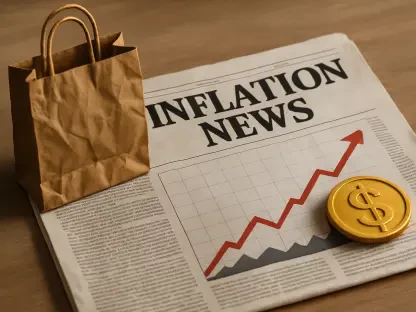Recent developments surrounding President Donald Trump’s decision to implement a 90-day pause on tariffs have generated a surge of activity in the financial markets. This analysis aims to dissect the immediate market reactions, decipher ongoing trends, and project future implications for investors. With major financial indexes displaying significant movement and critical economic data on the horizon, understanding these dynamics is crucial for informed decision-making.
Immediate Market Reactions to the Tariff Announcement
The announcement of a 90-day pause on tariffs by President Trump has led to a remarkable rally in the stock markets. Investors greeted the news with enthusiasm, prompting significant jumps across major indexes such as Nasdaq, which surged over 12%, the Dow Jones, which climbed nearly 8%, and the S&P 500, which rose almost 10%. However, this initial surge was followed by a pullback in U.S. stock futures, with declines of 2.3% in Nasdaq futures, 1.4% in Dow Jones futures, and 1.9% in S&P 500 futures. This fluctuating response underscores the market’s inherent volatility and the uncertainty surrounding tariff policies.
Bitcoin experienced a slight decline, trading around $82,000, while gold futures saw an uptick of 2%. Meanwhile, the 10-year Treasury note yield dropped to approximately 4.3%, and oil futures fell by nearly 3%. These mixed responses reflect the intricacies of market reactions to policy changes and economic signals.
Historical Context of Tariffs and Economic Indicators
Tariffs as a Source of Market Volatility
Historical data reveals that tariffs have consistently been a source of market volatility. Trade tensions and tariff announcements have often led to uncertain economic conditions, causing market instability. Investors have had to navigate these volatile waters, making it essential to understand how tariffs have influenced market behavior over time.
Role of Economic Indicators
Economic indicators such as the Consumer Price Index (CPI) and employment data provide a window into the economy’s health. These indicators assist investors in predicting potential shifts in monetary policy. Historical trends in these economic indicators set the stage for interpreting current market reactions and the upcoming release of vital economic data.
Dissecting Current Market Movements
Initial Stock Market Rally Followed by Correction
The stock market’s initial rally in response to the tariff pause was a testament to investor optimism. However, the subsequent pullback in U.S. stock futures highlights the market’s volatile nature. The fluctuations observed in the Nasdaq, Dow Jones, and S&P 500 futures point toward questions regarding the sustainability of the initial positive response.
Anticipated Inflation DatA Critical Turning Point
The upcoming release of inflation data for March, specifically the CPI, is expected to indicate a slowdown in inflation. Forecasts suggest an annual rate of 2.6%, down from 2.8% in February. This would mark the lowest level since September, driven in part by falling energy prices. However, there are concerns that tariff policies might reverse these gains, emphasizing the importance of monitoring this data closely.
Corporate Performance and Market Sentiments
U.S. Steel and CarMax are among the significant corporate players experiencing notable changes. U.S. Steel shares fell by 10% in premarket trading after President Trump’s comments opposing foreign ownership of the company. Concurrently, CarMax reported disappointing earnings, resulting in an 8% decline in premarket trading. These developments highlight the interplay between corporate performance and investor sentiment.
Projections for Future Market Trends
International Market Reactions
Global markets have also responded positively to the tariff pause. Asian markets, with Japan’s Nikkei up 9% and Hong Kong’s Hang Seng rising 2%, have shown substantial gains. European stocks mirrored this trend, with the Stoxx 600 index climbing 5%. These global movements underscore the interconnectedness of financial markets.
Risks and Opportunities Ahead
Looking ahead, the lingering uncertainty surrounding trade policies continues to pose risks. Potential reversals in inflation trends and fluctuating corporate performances add layers of complexity to market predictions. Nevertheless, opportunities exist in sectors less impacted by these policies, where investors can focus on stable economic indicators.
Strategic Insights and Future Considerations
Regional Market Variations and Technological Disruptions
Differences in regional market responses to tariff policies emphasize the importance of geographic diversification. Technological innovations also play a pivotal role in shaping market dynamics. Staying abreast of these advancements can provide investors with valuable insights into potential growth avenues.
Common Misconceptions and Expert Insights
It is a common misconception that short-term market reactions are definitive indicators of long-term trends. Experts advocate for a cautious approach, emphasizing the need to analyze broader economic data and historical patterns. This understanding is vital for navigating market complexities.
Conclusion: Navigating the Market Landscape
The evolving landscape of trade policies, economic indicators, and corporate performances continues to shape market trends. The immediate reactions to Trump’s tariff pause highlight both the market’s volatility and its potential for growth. Looking forward, expert insights suggest adopting flexible and adaptive investment strategies to navigate these uncertainties.
Investors should consider diversifying their portfolios and focusing on stable sectors. Embracing technological advancements and remaining informed about regulatory changes will be crucial for making strategic investment decisions. The financial landscape remains dynamic, and informed investors can better navigate its complexities by staying vigilant and proactive.









